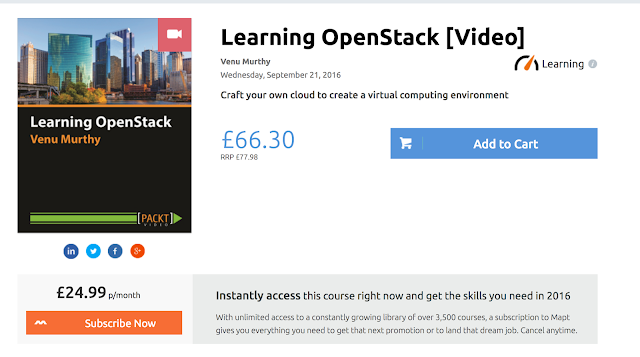What is OpenStack! OpenStack 101
I was at the Chef conference the other day and while talking to a Sys Admin who would now prefer being addressed to as a DevOps person now, was ranting how they wanted to move away from the expensive VMware and implement OpenStack!
There are several who have these smart plans but looking at the complexity involved in trying to understand why this is impossible, makes me to accept this ignorance.
Firstly OpenStack is very close to me as it's written in Python :) Python continues to be the secret ingredient for success of things as ancient as Google, upto DropBox and now for "The Linux of the Cloud--OpenStack!"
Before we start off lets understand what a Hypervisor is!
A hypervisor or virtual machine monitor (VMM) is a piece of computer software, firmware or hardware that creates and runs virtual machines.
In this again there are two types, Type 1 and Type 2
Type 1 (or native, bare metal) hypervisors run directly on the host's hardware to control the hardware and to manage guest operating systems. A guest operating-system thus runs on another level above the hypervisor.
This model represents the classic implementation of virtual-machine architectures; example the Citrix XenServer, VMware ESX/ESXi and Microsoft Hyper-V
Type 2 (or hosted) hypervisors run within a conventional operating-system environment. With the hypervisor layer as a distinct second software level, guest operating-systems run at the third level above the hardware. VMware Workstation and VirtualBox exemplify Type 2 hypervisors.
Why doesn't the wiki page for Hypervisor not even mention about OpenStack?
Going back to the defOpenStack, a cloud-computing project, aims to provide the "ubiquitous open source cloud computing platform for public and private clouds." Predominantly acting as an infrastructure as a service (IaaS) platform, it is free and open-source software released under the terms of the Apache License. The project is managed by the OpenStack Foundation, a non-profit corporate entity established in September 2012 to promote OpenStack software and its community.
So saying you don't need VMWare or the like and will go along with OpenStack is like saying, "I will throw out the server/hardware as I would like to go ahead with OpenStack"!
With OpenStack you would still need the hypervisor which will take care of managing your baremetal, while OpenStack Taking care of helping you build Infrastructure as Service.
OpenStack Compute supports many hypervisors to various degrees, including KVM, LXC, QEMU, UML, VMWare ESX/ESXi, Xen, PowerVM, Hyper-V.
And FileSystems Swift LVM, Ceph, Gluster, NFS, ZFS, Sheepdog
OpenStack is not the product!
As mentioned above its the name of the non-profit organisation.Vision of OpenStack
OpenStack is a great philosophy which is in progress and is not yet there, but The long term vision is to produce a ubiquitous open source cloud computing platform that will meet the needs of public and private cloud providers while being highly scalable or elastic.OpenStack is a stack of Python Apps providing a service
OpenStack services control large pools of compute, storage, and networking resources throughout a data center.
Each service provides a REST API so that all these resources can be managed through a dashboard that gives administrators control while empowering users to provision resources through a web interface, through a command-line client, or through software development kits that support the API.




